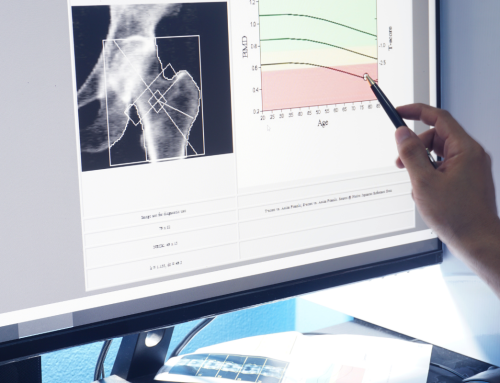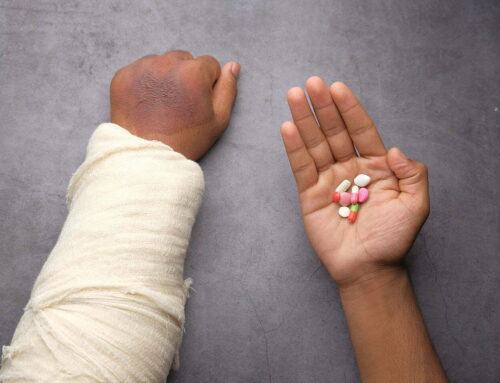
In the intricate web of human health, our body systems are interconnected in ways that often go unnoticed until problems arise. Two such conditions—osteoporosis and kidney disease—may seem unrelated at first glance. However, emerging research suggests a complex relationship that underscores the interdependence of our skeletal and renal systems. This blog delves into this link, uncovering how these conditions influence each other and how innovations like the Marodyne LiV device can play a role in managing their impact.
Understanding Osteoporosis and Kidney Disease
What is Osteoporosis?
Osteoporosis is a bone disease characterized by decreased bone mass and density, leading to a heightened risk of fractures. It typically occurs without symptoms until a bone break happens, often surprisingly from a minor fall or, in severe cases, from simple daily activities like bending over.
The Basics of Kidney Disease
Kidney disease involves the gradual loss of kidney function. The kidneys' primary role is to filter excess waste and fluids from the blood, which are then excreted in your urine. When this function fails, harmful wastes build up, leading to various health complications, including electrolyte imbalances and bone health issues.
The Connection: How Kidney Disease Affects Bone Health
One of the kidneys' lesser-known roles is contributing to bone health. They convert vitamin D into its active form, which is crucial for calcium absorption—an essentialsential mineral for bone strength. Kidney disease compromises this conversion, leading to reduced calcium absorption and, subsequently, weaker bones.
Kidneys also help regulate phosphate levels in the body. In kidney disease, the phosphate balance is disrupted, often leading to increased serum phosphate levels. This imbalance can lead to severe problems, including the calcification of tissues and further deterioration of bone health.
Osteoporosis as a Complication of Kidney Disease
Chronic kidney disease (CKD) can lead to a specific condition known as renal osteodystrophy. This refers to bone deformities resulting from alterations in kidney hormone levels. These deformities are similar to osteoporosis, including an increased risk of fractures.
Another complication of CKD is secondary hyperparathyroidism, where decreased kidney function leads to imbalances in calcium and phosphorous levels, prompting the parathyroid glands to overproduce their hormone. This excess can lead to bone resorption, where the bone is broken down faster than it is created, exacerbating bone loss and the risk of osteoporosis.
Strategies for Managing Bone Health with Kidney Disease
If you’re worried about your bone health with a history of kidney disease in your family or due to a recent diagnosis, there are precautions and strategies you can implement to give your health a boost.
Dietary Adjustments
Managing diet is crucial for patients with kidney disease to control phosphate and calcium levels. Reducing phosphate intake and ensuring adequate calcium and vitamin D consumption can help mitigate the impact on bones.
Medications and Treatments
Various medications can help manage the biochemical imbalances caused by kidney disease. These include phosphate binders that reduce phosphate absorption and vitamin D supplements to counteract the effects of its deficiency.
Physical Activity: The Double-Edged Sword
While physical activity is recommended for maintaining bone density, individuals with kidney disease often face limitations due to fatigue and other health issues. Hence, finding safe, effective ways to exercise becomes essential.
Introducing Marodyne LiV: A Revolutionary Approach to Bone Health
As we navigate the complexities of maintaining bone health amid kidney disease, innovative solutions like the Marodyne LiV device offer a new avenue. This low-vibration technology is designed to safely and naturally improve muscle strength, function, and circulation, which are vital for supporting bone health.
The Science Behind the Technology: How Does Marodyne LiV Work?
The technology behind Marodyne LiV is patent-pending and backed by scientific research. It's based on the principle that stimulating bone growth at a cellular level can help counteract the effects of conditions like osteoporosis, even in chronic illnesses such as kidney disease.
Marodyne LiV utilizes low-intensity vibrations to stimulate the body's bone-forming cells. This stimulation enhances bone density and strength without the high impact or stress that traditional exercise methods might impose on someone with kidney disease. It’s a gentle yet effective way to engage and strengthen the musculoskeletal system.
Who Can Benefit from Marodyne LiV?
This device is particularly beneficial for individuals who are unable to perform high-impact exercises due to their medical conditions. It offers a risk-free alternative to strengthening bones and muscles, making it ideal for those with osteoporosis and kidney disease.
Understanding the link between osteoporosis and kidney disease opens up pathways for better management practices that can dramatically improve the quality of life for those affected. Advanced technologies like Marodyne LiV give individuals a powerful tool to proactively manage and mitigate the bone health challenges associated with kidney disease.
This device can be used comfortably at home, enabling regular and convenient sessions that fit the lifestyle constraints of individuals with chronic kidney disease or osteoporosis. It’s a step toward regaining independence and improving overall quality of life.
A Call to Action: Embrace a Healthier Future
The journey towards better health does not have to be undertaken alone. With tools like Marodyne LiV, those affected by osteoporosis and kidney disease can take proactive steps toward enhancing their bone health. While a small part of daily life, this device can make a significant impact, reducing the risk of fractures and improving overall physical function.
The interconnection between bone health and kidney function is undeniable and complex, requiring thoughtful management and innovative solutions. Marodyne LiV offers a promising option for those looking to improve their bone health safely and effectively, making it a valuable addition to the health management toolkit for individuals at risk of or dealing with osteoporosis and kidney disease.
As we move forward, embracing such innovations will be key to managing chronic conditions more effectively and living fuller, more active lives. Let's step into a healthier future together, supported by the best that science and technology have to offer. For more information on how Marodyne LiV can be part of your health journey, contact our team. Together, we can redefine what it means to live well, even in the face of chronic health challenges.
What surprised you about the link between kidney disease and osteoporosis? What steps do you take to support bone strength? Share your thoughts with our readers in the comments below.




 Black Friday → Christmas Sale! Save $300 + Free Shipping
Black Friday → Christmas Sale! Save $300 + Free Shipping 